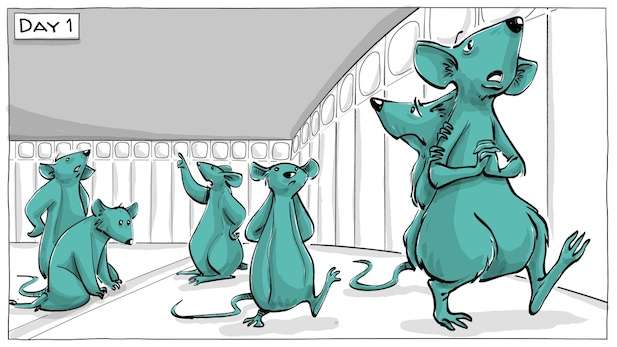

Applicability to humans Ĭalhoun himself saw the fate of the population of mice as a metaphor for the potential fate of humankind. Calhoun eventually found a way to prevent this by changing some of the settings and thereby decreased mortality somewhat, but the overall pathological consequences of overcrowding remained. The specific voluntary crowding of rats to which the term "behavioral sink" refers is thought to have resulted from the earlier involuntary crowding: individual rats became so used to the proximity of others while eating that they began to associate feeding with the company of other rats. Ĭalhoun retired from NIMH in 1984, but continued to work on his research results until his death on September 7, 1995. Ĭalhoun had phrased much of his work in anthropomorphic terms, in a way that made his ideas highly accessible to a lay audience. The 1962 Scientific American article came at a time at which overpopulation had become a subject of great public interest, and had a considerable cultural influence. Though physically able to reproduce, the mice had lost the social skills required to mate. By the 600th day, the population was on its way to extinction. In his most famous experiment in the series, "Universe 25", population peaked at 2,200 mice and thereafter exhibited a variety of abnormal, often destructive, behaviors including refusal to engage in courtship, females abandoning their young, and homosexuality. įollowing his earlier experiments with rats, Calhoun later created his "Mortality-Inhibiting Environment for Mice" in 1968: a 101-by-101-inch (260 cm × 260 cm) cage for mice with food and water replenished to support any increase in population, which took his experimental approach to its limits. Since Calhoun provided unlimited resources, such as water, food, and also protection from predators as well as from disease and weather, the rats were said to be in "rat utopia" or "mouse paradise", another psychologist explained. Rats could maneuver between the rooms by using the ramps. Every room was specifically created to support a dozen matured brown Norwegian rats. During his first tests, he placed around 32 to 56 rats in a 10-by-14-foot (3.0 m × 4.3 m) cage in a barn in Montgomery County. While Calhoun was working at the National Institute of Mental Health (NIMH) in 1954, he began numerous experiments with rats and mice. Ĭalhoun's early experiments with rats were carried out on farmland at Rockville, Maryland, starting in 1947. In the experiments in which the behavioral sink developed, infant mortality ran as high as 96 percent among the most disoriented groups in the population. As a result extreme population densities developed in the pen adopted for eating, leaving the others with sparse populations. Individual rats would rarely eat except in the company of other rats. As many as 60 of the 80 rats in each experimental population would assemble in one pen during periods of feeding. The animals would crowd together in greatest number in one of the four interconnecting pens in which the colony was maintained.
#UNIVERSE 74 RAT UTOPIA SERIES#
The common source of these disturbances became most dramatically apparent in the populations of our first series of three experiments, in which we observed the development of what we called a behavioral sink. The social organization of the animals showed equal disruption. Among the males the behavior disturbances ranged from sexual deviation to cannibalism and from frenetic overactivity to a pathological withdrawal from which individuals would emerge to eat, drink and move about only when other members of the community were asleep.

An even greater number, after successfully giving birth, fell short in their maternal functions.
#UNIVERSE 74 RAT UTOPIA FULL#
Many were unable to carry pregnancy to full term or to survive delivery of their litters if they did. In the 1962 study, Calhoun described the behavior as follows:

He would later perform similar experiments on mice, from 1968 to 1972.Ĭalhoun's work became used as an animal model of societal collapse, and his study has become a touchstone of urban sociology and psychology in general. Calhoun coined the term "behavioral sink" in his Februreport in an article titled "Population Density and Social Pathology" in Scientific American on the rat experiment. In the experiments, Calhoun and his researchers created a series of "rat utopias" – enclosed spaces in which rats were given unlimited access to food and water, enabling unfettered population growth. The term and concept derive from a series of over-population experiments Calhoun conducted on Norway rats between 19. Calhoun to describe a collapse in behavior which can result from overcrowding. " Behavioral sink" is a term invented by ethologist John B. Conceptual collapse in behavior which can result from overcrowding


 0 kommentar(er)
0 kommentar(er)
